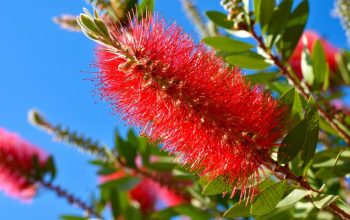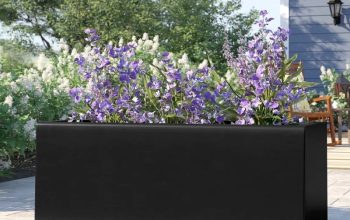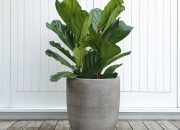Applications of Two-Plant Net Pots: 2 Plant Net Pot

2 plant net pot – The humble two-plant net pot system, a testament to horticultural ingenuity, unlocks a world of possibilities for the ambitious grower. Its compact design belies its versatility, offering a surprisingly efficient method for cultivating a diverse range of plants, both indoors and out. This system’s efficacy stems from its ability to optimize resource allocation, maximizing growth while minimizing space requirements.
Let us delve into the multifaceted applications of this ingenious system.
Suitable Plants for Two-Plant Net Pot Systems
The choice of plants for a two-plant net pot system hinges on several factors, including the plants’ mature size, root systems, and growth habits. Careful selection ensures harmonious coexistence and prevents competition for vital resources. Herbs, such as basil and mint, thrive in this environment, their compact nature complementing the system’s limited space. Similarly, smaller varieties of tomatoes and peppers can flourish, provided they receive adequate sunlight and nutrients.
Strawberries, with their shallow root systems, also adapt well, offering a delightful bounty in a surprisingly small footprint. The key is to select plants with compatible growth rates and needs to avoid overshadowing or nutrient depletion.
Two-Plant Net Pot Setups in Various Growing Environments, 2 plant net pot
The adaptability of the two-plant net pot system shines through in its suitability for diverse growing environments. Indoors, under grow lights, this system provides a controlled environment ideal for year-round cultivation. A simple setup might involve placing the net pots in a tray filled with nutrient solution, ensuring consistent moisture and nutrient delivery. Outdoors, the system can be integrated into raised beds or hanging baskets, capitalizing on natural sunlight.
Two-plant net pots offer a simple, cost-effective solution for growing seedlings or small plants. However, for those seeking a more hands-off approach, consider the advantages of self watering plant pots , which reduce the frequency of watering. Ultimately, the choice between these methods depends on individual needs and the level of maintenance desired for the two plants within the net pots.
In greenhouses, the controlled environment allows for optimal temperature and humidity regulation, further enhancing plant growth. Adapting the system to the specific environment is crucial for success. For example, outdoor setups might necessitate additional protection from harsh weather conditions.
Optimal Spacing and Arrangement of Plants
The arrangement of plants within a two-plant net pot is crucial for maximizing growth. Overcrowding can lead to competition for light, water, and nutrients, ultimately hindering the plants’ development. Ideally, plants should be positioned to allow for optimal light penetration to all leaves. This might involve arranging the plants slightly offset from each other to prevent direct shading.
Consider the mature size of the plants to ensure sufficient space for root development and overall growth. Regular observation and adjustment are key to maintaining an optimal arrangement throughout the plants’ life cycle.
Step-by-Step Guide to Setting Up and Maintaining a Two-Plant Net Pot System
Embarking on the journey of cultivating plants in a two-plant net pot system is surprisingly straightforward. This detailed guide simplifies the process, empowering beginners to achieve successful harvests.
Step 1: Gather Your Materials
| Item | Quantity | Notes |
|---|---|---|
| Net Pots | 2 | Size appropriate for chosen plants |
| Grow Medium (e.g., coco coir, rockwool) | Sufficient for filling net pots | Choose a medium suitable for hydroponics |
| Nutrient Solution Reservoir | 1 | Size appropriate for the number of plants |
| Nutrient Solution (balanced hydroponic fertilizer) | As per manufacturer’s instructions | Follow instructions carefully to avoid nutrient burn |
| Water Pump (optional, for larger setups) | 1 | To circulate nutrient solution |
| Grow Lights (for indoor setups) | As needed | Provide sufficient light intensity and duration |
| pH Meter | 1 | To monitor and adjust nutrient solution pH |
Step 2: Prepare the Net Pots
Fill each net pot with the chosen grow medium, ensuring it’s evenly distributed. Gently moisten the medium but avoid overwatering.
Step 3: Plant Your Seedlings
Carefully place the seedlings into the prepared net pots, ensuring the roots are gently nestled within the grow medium.
Step 4: Position the Net Pots
Place the net pots into the nutrient solution reservoir, ensuring the roots are submerged in the solution.
Step 5: Monitor and Maintain
Regularly monitor the nutrient solution level, pH, and overall plant health. Replenish the solution as needed and adjust the pH to maintain optimal levels. Observe for signs of nutrient deficiencies or pest infestations and take appropriate action. Regularly check for root growth and adjust spacing as needed to avoid overcrowding.
Growth Considerations with Two-Plant Net Pots

The seemingly simple act of cramming two plants into a single net pot presents a dramatic stage for a horticultural showdown. A battle for resources unfolds, a silent struggle for survival played out in the confines of a small, porous container. While the potential for increased yield per unit area is alluring, ignoring the inherent challenges risks a tragic end for both combatants.
Understanding these challenges and implementing proactive strategies is crucial for a successful, bountiful harvest.The shared environment of a two-plant net pot creates an intensified competition for essential resources. Roots, once peacefully exploring their individual territories, now engage in a desperate scramble for water, nutrients, and oxygen. This competition can lead to stunted growth, reduced yields, and increased susceptibility to diseases, transforming a promising experiment into a botanical tragedy.
Resource Competition and its Effects
The limited space within a net pot exacerbates the inherent competition for resources. Both plants vie for the same limited supply of water and nutrients, leading to uneven growth and potentially hindering the overall yield. One plant might dominate, overshadowing its companion and leaving it starved and struggling. This unequal distribution of resources is a significant factor to consider when implementing a two-plant net pot system.
For example, two vigorous tomato plants planted closely together might compete for water and nutrients, resulting in smaller fruit yields compared to single plants in separate pots.
Nutrient Deficiencies and Imbalances
Growing two plants in close proximity can amplify nutrient deficiencies and imbalances. If the nutrient solution isn’t carefully balanced and adequately supplied, one plant might outcompete the other, leaving it vulnerable to nutrient deficiencies. The symptoms of these deficiencies can vary depending on the specific nutrient lacking; for example, nitrogen deficiency can manifest as yellowing leaves, while phosphorus deficiency can lead to stunted growth and dark green foliage.
This unequal access to nutrients can severely impact the health and productivity of both plants.
Preventative Measures for Two-Plant Net Pots
Careful planning and proactive measures are essential to mitigate the challenges associated with growing two plants in a single net pot. The following steps can help ensure a more harmonious coexistence and a bountiful harvest:
- Select appropriate plant varieties: Choose compact, slow-growing varieties to minimize competition for space and resources. Avoid planting two aggressively growing plants together.
- Ensure adequate spacing: Even within a net pot, allow sufficient space for root development. Overcrowding intensifies competition and stress.
- Optimize nutrient solution: Provide a nutrient-rich solution tailored to the specific needs of the chosen plants, ensuring sufficient supply for both.
- Regular monitoring and adjustment: Closely monitor the plants’ growth and health, adjusting nutrient levels and watering schedules as needed to maintain a balance.
Monitoring Plant Health and Adjusting Growing Conditions
Regular monitoring of the plants is paramount to success. Visual inspections should be conducted daily to assess the plants’ overall health and growth. Look for signs of nutrient deficiencies (yellowing leaves, stunted growth), pests, or diseases. Regularly check the pH and EC (electrical conductivity) of the nutrient solution to ensure it remains within the optimal range for the chosen plants.
Adjust the nutrient solution and watering schedule based on the observed growth patterns and environmental conditions. Weighing the plants at regular intervals can provide a quantitative measure of their growth rate, helping to identify any imbalances or problems early on. For instance, if one plant consistently shows slower growth than its counterpart, this could indicate a resource imbalance that needs addressing.
Detailed FAQs
What size net pots are best for a two-plant setup?
It depends on the plants! Choose pots large enough to accommodate the mature root systems of your chosen plants without overcrowding. Research your specific plant’s mature size for guidance.
Can I use any type of plant in a two-plant net pot?
Not all plants are created equal. Choose plants with similar growth habits and nutrient needs to minimize competition. Avoid plants with aggressively spreading root systems.
What if my plants start competing for resources?
Monitor your plants closely. If one plant is significantly outgrowing the other, consider pruning or adjusting nutrient levels. You might also need to repot one plant into a separate net pot.
How often should I water a two-plant net pot?
This depends on your growing medium, environment, and plant type. Check the moisture level regularly; aim for consistently moist but not waterlogged conditions. Avoid overwatering.










